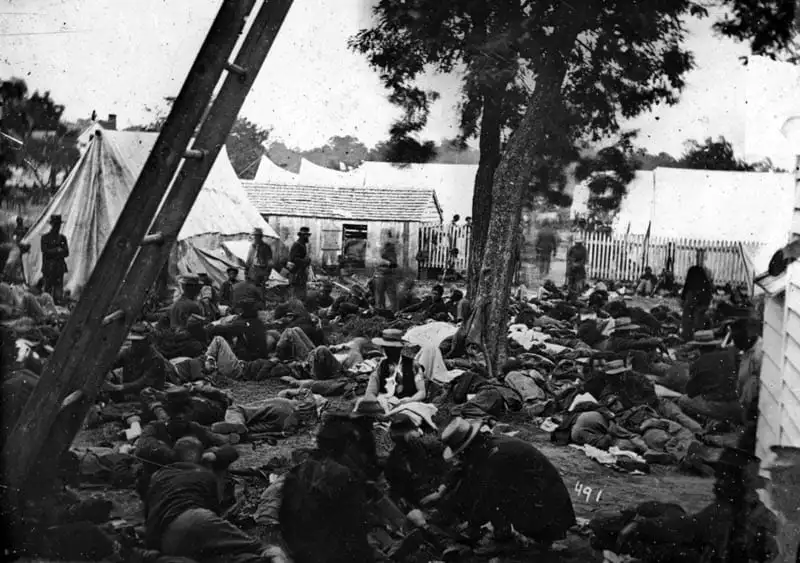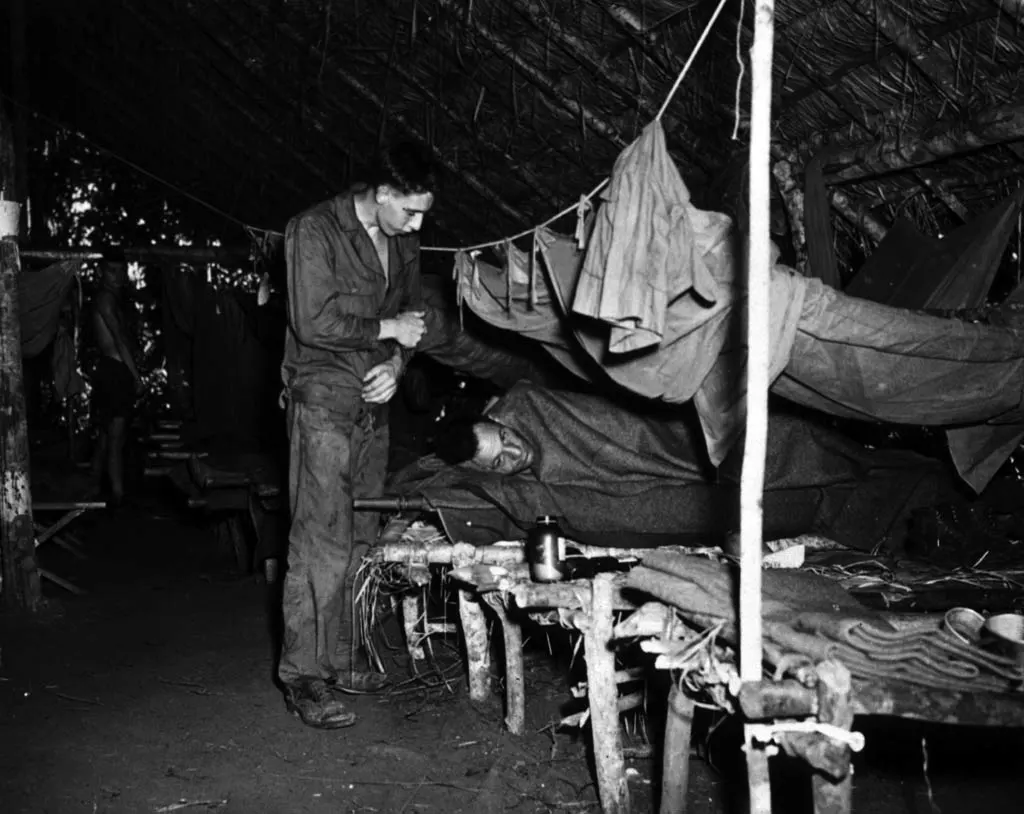The Wisconsin Angel
Soldier Amelioration
Cordelia Harvey strived to bring every Wisconsin soldier back home after the war. While visiting hospitals, Cordelia saw the horrible conditions the soldiers faced. Cordelia defined new frontiers to improve the survival rate of the soldiers. During her visits to war zones, she fell sick and noticed that her recovery was quicker once she returned to Wisconsin. She decided to put an action plan in place to move the injured and diseased soldiers to the north for quick recovery.

A Civil War field hospital in Savage Station, Library of Congress

A census map from 1870 displays the proportion of malaria-based deaths compared with total deaths in the United States at the time. In the reddest areas at least 14% of the deaths were attributed to malarial diseases.

An interior view of malaria patients in a patients’ ward at the 7th Portable Surgical Hospital, Soputa, New Guinea, National Library of Medicine, 1934
Escalating Issues
After visiting the hospitals at Benton Barrack and Fifth Street, which were stuffed with soldiers from the battlefields of Missouri and Tennessee, Cordelia Harvey recognized the need for improving the organization of hospitals and medical camps. In Cape Girardeau, she noticed sheds filled with cots, which became the breeding grounds for diseases like Pneumonia and Camp Fever. She wasn't afraid to help bury a dead, infected soldier with her own hands, which she talked about modestly. She petitioned to get the army rations increased and procured materials at every location she visited. She gained the confidence of General Curtis who put her in charge of visiting all his hospitals. She knew her ideas were valid as she convinced General Grant to permit to move hundred dying men from Fort Pickering to the North. Only 7 died.
Due to her devotion to caring for the soldiers, she was called the Wisconsin Angel, but she felt she was simply doing her duty.
← CONTEXT
LETTERS TO GOVERNOR→